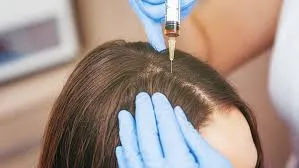
While many treatments claim to treat hair loss, platelet-rich plasma (PRP) therapy has emerged as a promising and innovative solution. Rooted in regenerative medicine, PRP treatment focuses on utilizing the body’s natural healing abilities to support hair regrowth. Below is some information about what PRP therapy is, how the process works, its potential benefits for hair loss treatment, and what patients can expect during the procedure.
Understanding Platelet-Rich Plasma Therapy
PRP therapy leverages the healing properties of platelets found in your blood. Platelets play a role in tissue repair and regeneration, releasing growth factors that help trigger cell renewal and healing processes in the body. By isolating and concentrating these platelets, PRP sessions allow practitioners to apply them directly to target areas, such as the scalp, to promote healthier hair follicles. The process begins with a simple blood draw. The sample is then spun in a centrifuge to separate platelets and plasma from other components of the blood. What remains is platelet-rich plasma, which is then injected into the scalp where thinning or hair loss occurs.
Exploring the Potential Benefits of PRP Therapy
Research into the applications of plasma therapy for hair regrowth suggests its promising effects in promoting healthier hair growth cycles. When applied to the scalp, PRP may help reinvigorate hair follicles and stimulate new growth activity. This non-surgical therapy offers a minimally invasive option for patients seeking treatment for thinning or hereditary hair loss.
PRP therapy does not introduce foreign substances into the body, relying solely on your natural blood components. The procedure is widely regarded as being well-tolerated, and many patients report only mild discomfort during the injections. The outpatient nature of these sessions allows individuals to quickly resume their daily routines after treatment is complete.
The PRP Treatment Process for Hair Regrowth
Preparation and delivery of PRP therapy are key components of its success. Once the plasma is isolated, skilled practitioners inject the solution into targeted areas of the scalp. These injections are typically administered in a grid-like pattern to cover areas where regrowth is desired. Most patients undergo a series of treatment sessions spaced several weeks apart. The exact number of sessions may vary depending on individual response and the severity of hair loss.
Regular follow-ups may also help maintain any improvements made during the treatment. Since PRP therapy relies on your body’s natural processes, noticeable changes may take time to develop. Patients often observe gradual improvements in hair volume and texture. Results may vary, as factors such as age and the extent of hair loss can influence outcomes.
Looking Ahead with PRP for Hair Regrowth
Platelet-rich plasma therapy offers a science-backed approach to addressing hair thinning and loss, opening possibilities for those seeking non-surgical alternatives. By harnessing the regenerative qualities of platelets, this treatment focuses on supporting the health and activity of hair follicles without introducing artificial substances or invasive techniques. With its focus on utilizing the body’s regenerative capabilities, PRP has become a widely discussed option in the world of hair restoration.